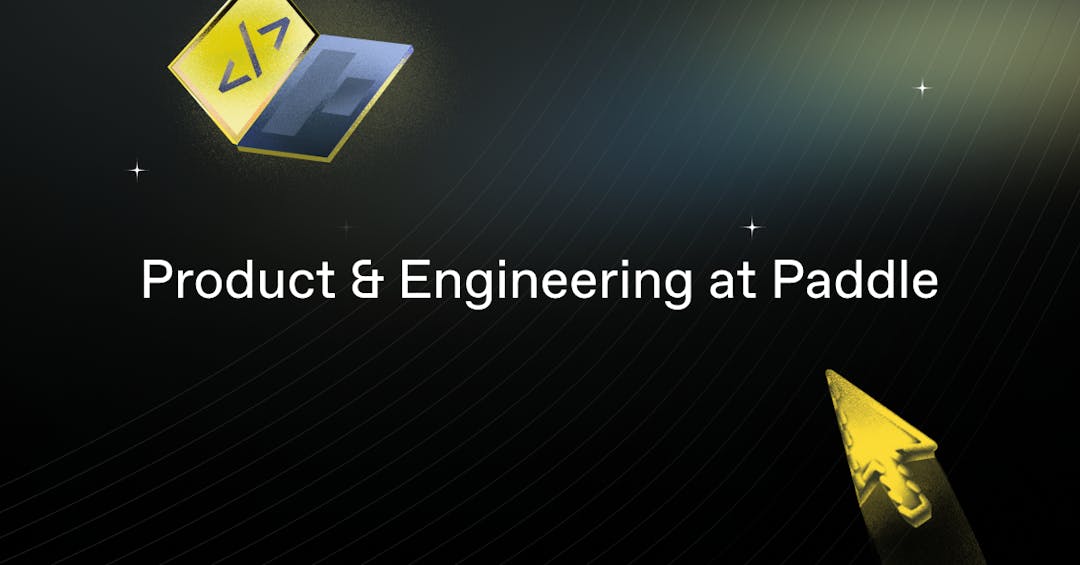At Paddle, we believe that great developer experiences come from providing an intuitive product and easy-to-use tools. We’ve dedicated ourselves to delivering better documentation, resources, and developer tooling over the past year, and we’re confident these changes will give you more time to build and less time managing your payment and billing systems.
Over the last year, we’ve taken significant steps to improve both our developer tools and the resources available to you. Our mission remains simple: to make your development journey as smooth and efficient as possible, so you can focus on building amazing products, not managing your billing infrastructure.
We’re excited to share some major updates from the DX team.
Go SDK: Officially stable
Earlier this year, we launched two new SDKs, and we’re happy to announce that our Go SDK has been tagged as v1. It joins our PHP and Node SDKs, which have already helped developers quickly and reliably integrate Paddle. The Go SDK is built with the same level of care as our API, ensuring a seamless experience when working with Paddle.
We are also excited to share that our Python SDK is also nearing its v1 release. This will bring us one step closer to our goal of offering four fully mature, first-party SDKs by the end of the year, making Paddle integrations even easier across the most popular languages.
Paddle + Next.js Starter Kit: A simplified integration experience
There’s no disputing Next.js’s popularity as the increasingly default choice for react developers, and customers using Next.js had repeatedly requested more content support for working with Next.
The DX team also wanted to start putting together starter kits to a) showcase best practices when working with Paddle and b) provide an out of the box starting point for new customers and starting with the fantastic Next community just made sense.
We’ve delivered a solution that not only meets those needs, but exceeds them. We’re thrilled to introduce the new Paddle + Next.js Starter Kit—a powerful, pre-built solution designed to help you hit the ground running.
Built on Next.js 14 and other tools and libraries that we’re huge fans of like the shadcn component library, Tailwind CSS, and Supabase, this starter kit provides best practices for integrating Paddle into your Next.js project. It comes with a flexible pricing page, inline checkout implementation, and an authenticated dashboard with simple billing management features—all ready to go out of the box.
Whether you’re just starting a new project or looking for a more efficient way to handle billing, the Paddle + Next.js Starter Kit has you covered. To get started, head over to billing.new, fork it on GitHub, or find it on the Vercel template page.
Webhook simulator: Streamlining testing and integration
Finally, we’re excited to unveil one of our most requested features: the Webhook Simulator. We know that testing Paddle integrations can be a bit of a challenge, especially when it comes to understanding when webhooks will fire or recreating scenarios in a sandbox environment. The Webhook Simulator changes all of that.
This new tool allows you to simulate any Paddle event and fire the associated webhooks directly to your system, all with just a few clicks. No more manual checkout completions or dashboard navigation just to test payloads. The Webhook Simulator makes integration testing faster and more efficient than ever before.
And we didn’t stop there. With scenario testing, you can dive deeper into how your platform responds to real-world events like new subscriptions, payment failures, and cancellations. This feature shows exactly what data you’ll receive and why, ensuring your integration is rock-solid from day one.
If you’ve already integrated with Paddle, the Webhook Simulator can still provide value. Webhooks are how we recommend you manage access to your app, so hooking the simulator up to your test suite will ensure everything continues to run smoothly as your platform evolves.
Looking ahead
Initially, the Webhook Simulator will mock test data, but we’re working on future updates to make it more representative of your actual Paddle data and workflows. We’d love to hear from you as we continue to enhance this feature—your feedback helps us shape the tools you rely on.
We’re excited about these updates and can’t wait to see how they’ll help you build faster and more effectively with Paddle. As always, we’re here to support you, so don’t hesitate to reach out if you have questions or suggestions
That’s the latest from Paddle. We’re committed to making your development experience better every day, and we can’t wait to see what you’ll build with these new tools!



